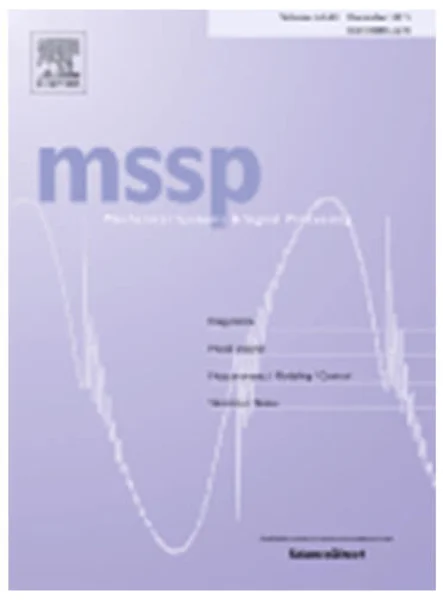-
an inverse shock response spectrum
جزئیات بیشتر مقاله- تاریخ ارائه: 1390/01/01
- تاریخ انتشار در تی پی بین: 1390/01/01
- تعداد بازدید: 431
- تعداد پرسش و پاسخ ها: 0
- شماره تماس دبیرخانه رویداد: -
the shock response spectrum (srs) is a tool commonly used by application engineers that characterizes the severity of a transient acceleration. due to the definition of the srs, neither an analytical nor a unique inverse exists for an arbitrary function. an srs presented without any temporal information makes creating a corresponding acceleration time history for an experimental or numerical study prohibitively difficult without a rigorous method to determine an inverse of the srs (a corresponding time history). the present work develops a method to calculate an inverse of an arbitrary srs using three sets of well characterized basis functions: an impulse function, a sine function/damped sine function, and a modified morlet wavelet. these three basis functions are specifically chosen for the properties of their transformations: the impulse introduces a constant increase to the srs above a given frequency, the sine wave introduces a narrow peak at a given frequency, and the morlet wavelet introduces a plateau with an adjustable width and relative height. using the definition of the srs, the transformations of the basis functions are calculated and these expressions are used to derive a methodology for calculating an inverse srs. the effectiveness of the method is demonstrated by several examples. the quality of an inverse srs is evaluated by comparing the srs of the inverse to the target srs. this method is developed in order to provide a quick estimate of a corresponding time history; in applications where a higher fidelity representation of the srs is needed than can be provided by the method developed, a genetic algorithm is used to optimize the coefficients of the basis functions. given a sufficient number of basis functions for the optimization, the resulting srs can almost exactly match a randomly generated target srs that is nonzero over the frequency range considered. for applications in which the permissable basis functions are limited (such as for an experimental test apparatus), an extension of the genetic algorithm method is discussed.
مقالات جدیدترین رویدادها
-
استفاده از تحلیل اهمیت-عملکرد در ارائه الگوی مدیریت خلاقیت سازمانی و ارائه راهکار جهت بهبود
-
بررسی تاثیر ارزش وجوه نقد مازاد بر ساختار سرمایه شرکت های پذیرفته شده در بورس اوراق بهادار تهران
-
بررسی تأثیر سطح افشای ریسک بر قرارداد بدهی شرکت های پذیرفته شده در بورس اوراق بهادار تهران
-
بررسی تأثیر رتبه بندی اعتباری مبتنی بر مدل امتیاز بازار نوظهور بر نقد شوندگی سهام با تأکید بر خصوصی سازی شرکت ها
-
تأثیر آمیخته بازاریابی پوشاک ایرانی بر تصویر ذهنی مشتری پوشاک ایرانی (هاکوپیان)
-
آموزش مجازی و نقش شبکه های اجتماعی در یادگیری در دوران کرونا
-
مقایسه اثر دگزامتازون و متوکلوپرامید بر تهوع و استفراغ بعد از عمل
-
تاثیر استفاده توام از نانوسیلیس و میکروسیلیس بر روی مقاومت فشاری بتن سبک با سنگدانه لیکا
-
covert possessor raising in japanese
-
bio-hydrogen and bio-ethanol as alternative fuels compared with gasoline from the viewpoints of performance and emissions
مقالات جدیدترین ژورنال ها
-
مدیریت و بررسی افسردگی دانش آموزان دختر مقطع متوسطه دوم در دروان کرونا در شهرستان دزفول
-
مدیریت و بررسی خرد سیاسی در اندیشه ی فردوسی در ادب ایران
-
واکاوی و مدیریت توصیفی قلمدان(جاکلیدی)ضریح در موزه آستان قدس رضوی
-
بررسی تاثیر خلاقیت، دانش و انگیزه کارکنان بر پیشنهادات نوآورانه کارکنان ( مورد مطالعه: هتل های 3 و 4 ستاره استان کرمان)
-
بررسی تاثیر کیفیت سیستم های اطلاعاتی بر تصمیم گیری موفق در شرکتهای تولیدی استان اصفهان (مورد مطالعه: مدیران شرکتهای تولیدی استان اصفهان)
-
حقوق دیپلماتیک در اسلام
-
سخنی در انواع نظام های ثبت اختراع؛ با نگاهی به برخی اصول ثبتی
-
نقش و تاثیر رفاه اجتماعی بر میزان مشارکت سیاسی شهروندان
-
شناسایی عوامل افزایش هزینه در پروژه های عمرانی با استفاده از رویکرد تصمیم گیری چند شاخصه فازی (مورد مطالعه: شهرداری تهران)
-
hydrochemical characterisation of groundwater quality: merdja plain (tebessa town, algeria)




سوال خود را در مورد این مقاله مطرح نمایید :